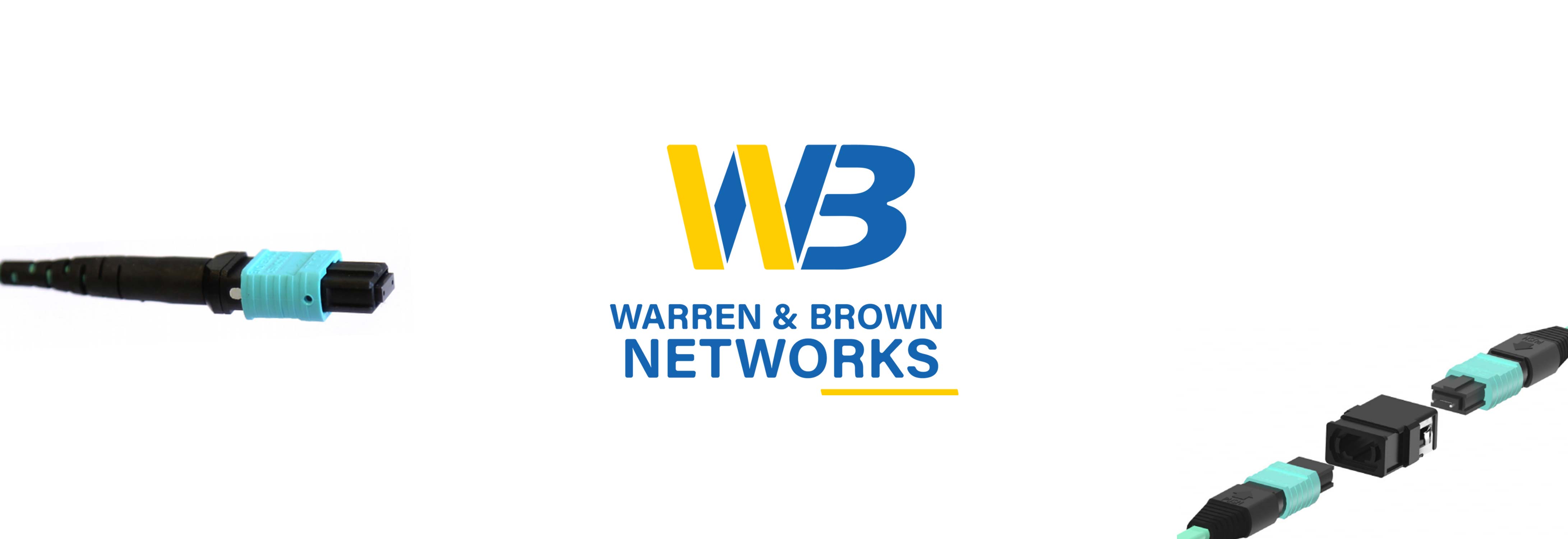Fibre optic MTP / MPO Connectors - Specifications, interfaces and key positions
News, HypaFOX MTP® - August 03, 2020

Differences between MTP® and MPO connectors
In simple terms, an MTP® connector, as described by US Conec, is “a high-performance MPO connector with multiple engineered product enhancements, improving optical and mechanical performance when compared with generic MPO connectors”. MTP® and MPO connectors are fully compatible.
MTP is a brand of US Conec and MTP® brand connectors are fully compliant with IEC Standard 61754-7 and TIA 604-5 – Type MPO.
Some of the advantages and distinctions between MTP® and MPO connectors include:
- MTP® connectors have removable housing. This feature allows users to re-work and re-polish the MT ferrule if required, as well as scan the ferrule interferometrically after assembly.
- MTP® connectors contain a floating ferrule which improves mechanical performance. This feature allows two mated ferruled to maintain physical contact while under an applied load.
- The MTP® connector spring design, maximizes ribbon clearance for twelve fibre and multifibre ribbon applications to prevent fibre damage. Overall, MTP® connectors provide a more reliable and precise connection.
MTP®/MPO connectors (Female and Male interfaces)
MTP®/MPO connectors are available with either female or male interfaces. Male MTP®/MPO connectors contain 2 guiding pins, which mate with female MTP®/MPO connectors.
The male to female connection between MTP®/MPO connectors is crucial, as the guiding pins in the male assembly ensure precise alignment with the female assembly. This is essential for high speed and reliable connectivity.
Switches with MTP®/MPO interfaces for 40G and 100G transmission systems are pinned (male). Therefore, all equipment patch cords must contain female pins at the equipment side in order to correctly mate with transmission equipment.
Generally, all backbone or trunk cable assemblies also feature female connectors on each side of the cable. These mate with MTP®/MPO cassettes, which all contain male pins.
Array cables, trunks or equipment patch cords can be specified with either female or male connectors at one or both ends, depending on the configuration requirements.
In either case, it is essential that female MTP®/MPO connectors correctly mate with male MTP®/MPO connectors, ensuring correct alignment. An MTP/MPO through adaptor is required when joining MTP/MPO cables together.
MTP®/MPO connectors (Key up and Key down)
Every MTP®/MPO connector has a key on one side of the connector assembly. When the key is positioned on top, this is referred to as the key up position. When the key is positioned on the bottom, this is called key down. Key up and key down positions have an impact on polarity configurations and fibre alignment.
In this orientation, each of the fibres in the connector are numbered in sequence from left to right and is referred to as fibre position, or P1, P2, etc. A white dot is additionally marked on one side of the connector to denote where position 1 is. The orientation of this key also determines the MTP®/MPO cable assembly polarity.
Special attention is required when deploying APC (angled) ferrules in singlemode systems. There will only be one key position possible.

White dot on the side of the MTP®/MPO connector signifies P1 fibre position.

Type A Adaptor configuration — Key up to Key down. On one side of the link, the MTP®/MPO adaptor is Key up. The opposite side is key down.

Type B Adaptor configuration — Key up to Key up. Both MTP®/MPO connectors in the link are positioned key up.
Optical Performance
Another important consideration when deciding on MTP or MPO connectivity is the optical performance of each connector and ensuring that expected losses fit within the optical budget.
MPO connectors are available with either standard or Low Loss ferrules, whilst MTP connectors are available with either Standard or Elite ferrules.
The Low loss and Elite version provide the lowest insertion losses and optimal performance as outlined in the chart below.

